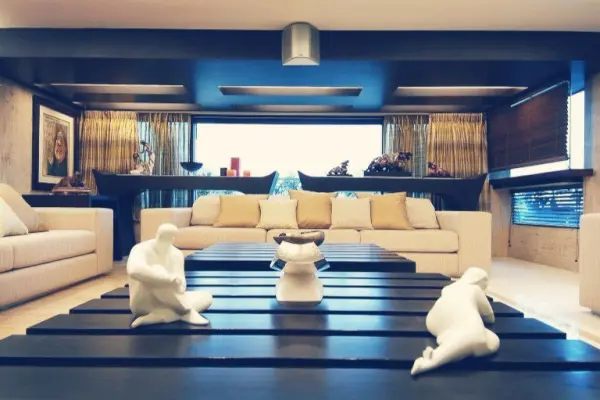Even the most harmonious interior without art objects looks incomplete. Artistic objects in a home space are not just decor, but the soul of the space, its uniqueness and individuality. Have you ever thought about the power that a well-chosen piece of art has? Paintings, panels, sculptures, tapestries, and ceramic products magically transform the setting, make staying at home brighter, and help express your personality. How do you decorate your home with art to create a harmonious space rather than a museum exhibition? How do you properly place creative works in a home setting? These questions concern everyone who strives to make their home not just comfortable, but also a stylish interior with art.
What Art Objects Are Appropriate in Home Interior?
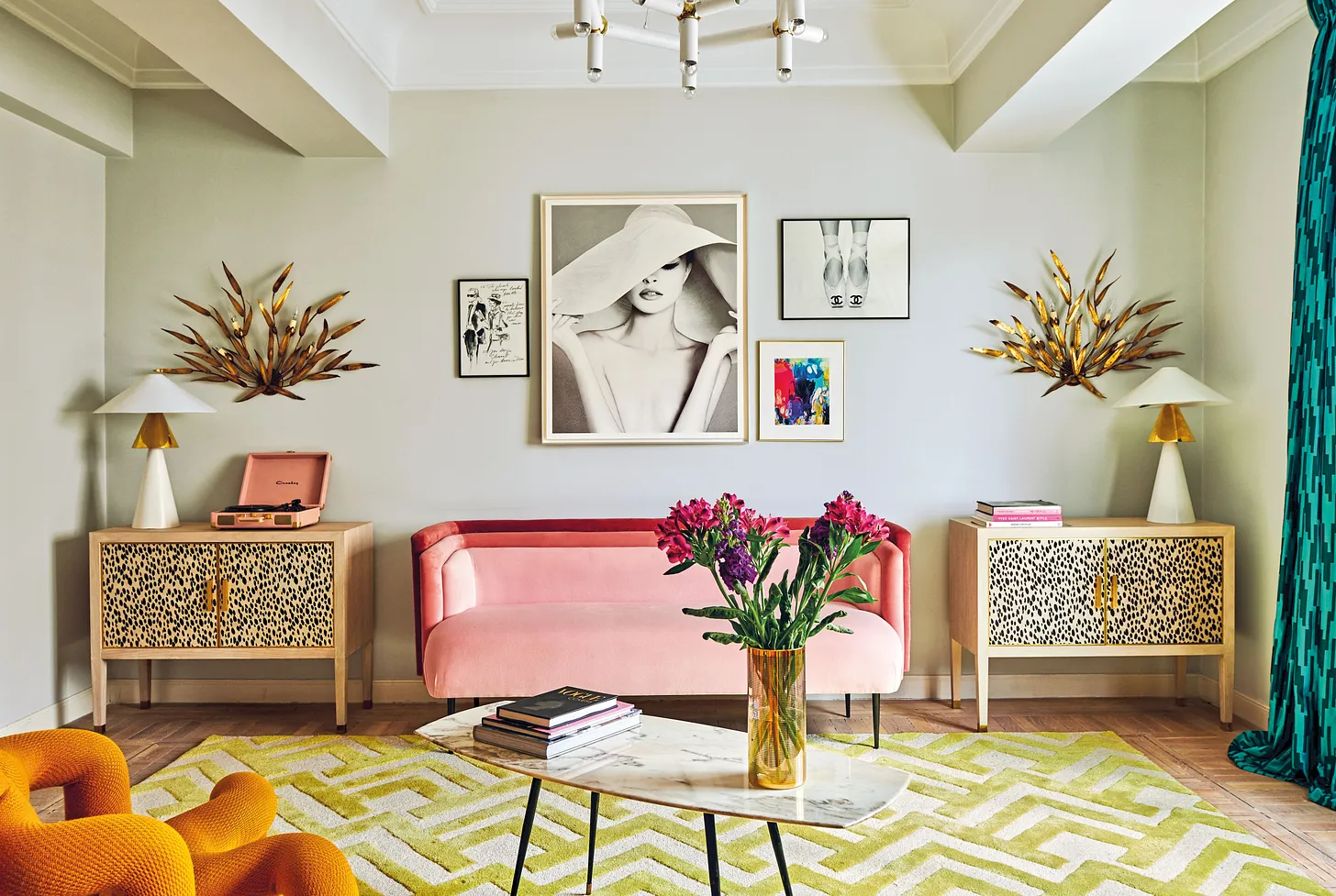 You don't have to decorate your dwelling with pompous sculptures or ethnic decorations. A few modest objects are enough to create a pleasant ambiance. Want your home to look like a professionally designed space? If size and financial capabilities allow, you can add interior decor with elements of luxury. But this is only appropriate with corresponding design, not in a house with ordinary doors and simple renovations. In such cases, large sculptures would look ridiculous. It's important to find harmony between art and furniture, selecting art that matches the house. Among the popular options for art in interior design are:
You don't have to decorate your dwelling with pompous sculptures or ethnic decorations. A few modest objects are enough to create a pleasant ambiance. Want your home to look like a professionally designed space? If size and financial capabilities allow, you can add interior decor with elements of luxury. But this is only appropriate with corresponding design, not in a house with ordinary doors and simple renovations. In such cases, large sculptures would look ridiculous. It's important to find harmony between art and furniture, selecting art that matches the house. Among the popular options for art in interior design are:
- Paintings in interiors: These can be copies of famous works or pieces by less-known artists. Abstract paintings for interiors, landscapes, still lifes, portraits, and floral motifs are ideal for decorating a home with paintings. The size of the painting in a home space depends on the dimensions and layout of the room.
- Artistic ceramics in design: Today's market offers a huge selection of ceramic products — vases, figurines, pitchers, and much more. These small items harmoniously fit into any interior, giving it a new sound and an amazing transformation of space.
- Handmade rugs and tapestries in interiors: Despite seeming strange, handmade rugs and tapestries are also textile elements in high-level decor. They can beautifully decorate an interior, fully justifying their price.
- Sculptures in the home: From miniature figurines to volumetric art objects — three-dimensional art forms add character and originality to the interior.
- Photographs as decor elements: Professional or personal photographs in beautiful frames create not only an aesthetic but also an emotional effect in the interior.
- Artistic panels: Volumetric or flat, they become a bright accent and create a striking effect in any room.
- Art installations: Modern forms of art that can combine various materials and techniques to create a unique atmosphere.
"Art should reflect your personality and evoke emotions. Don't be afraid to choose what you really like, even if it doesn't correspond to the latest trends. Your home is a reflection of you, not pages from a fashion magazine." — Martha Stewart, interior designer
History of Art Use in Interiors
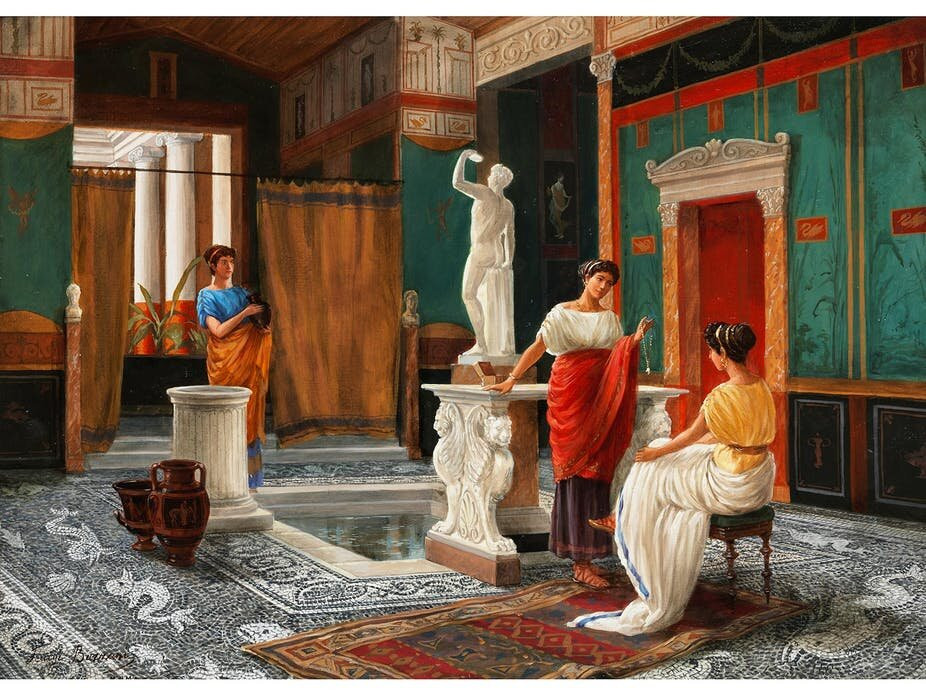 The tradition of decorating dwellings with art objects has a centuries-old history. Since ancient times, people have sought to surround themselves with beautiful things that not only served a practical function but also pleased the eye. Ancient Romans placed mosaics and frescoes in their homes, during the Renaissance rich homes were decorated with canvases by great masters, and in the Victorian era it became fashionable to collect antique interior items and exotic artifacts.
The tradition of decorating dwellings with art objects has a centuries-old history. Since ancient times, people have sought to surround themselves with beautiful things that not only served a practical function but also pleased the eye. Ancient Romans placed mosaics and frescoes in their homes, during the Renaissance rich homes were decorated with canvases by great masters, and in the Victorian era it became fashionable to collect antique interior items and exotic artifacts.
Today, art in interior design has become more accessible and diverse. Modern art-decor trends are moving away from strict rules — now an individual approach, mixing of styles and eras is valued. Art-loft style, for example, involves placing contemporary works of art in spaces with industrial charm. What makes a space truly yours, if not objects that reflect your individuality and understanding of beauty?
"Art is not what you see, but what you make others see." — Edgar Degas, famous impressionist artist
How to Properly Place Art Objects in Interiors?
.jpg) Placing art objects in an interior is a true art in itself. It's not enough to just hang a picture on the wall or put a vase on a shelf. You need to think about composition, lighting for art objects, and combination with other interior elements. According to experts from Architectural Digest, one of the most common mistakes in the design process is leaving art for later, not including it in the initial budget, and not thinking ahead about its placement when planning rooms. It is precisely a well-thought-out approach to the selection and placement of creative works in a home setting that can elevate the interior to a completely new level.
Placing art objects in an interior is a true art in itself. It's not enough to just hang a picture on the wall or put a vase on a shelf. You need to think about composition, lighting for art objects, and combination with other interior elements. According to experts from Architectural Digest, one of the most common mistakes in the design process is leaving art for later, not including it in the initial budget, and not thinking ahead about its placement when planning rooms. It is precisely a well-thought-out approach to the selection and placement of creative works in a home setting that can elevate the interior to a completely new level.
Is it possible to create a gallery atmosphere in an ordinary apartment? Absolutely! Accent walls with paintings are becoming an increasingly popular solution in modern design. They allow you to create a focal point in the room and effectively present your painting collection.
| Type of Art Object | Placement Recommendations | Lighting Features |
|---|---|---|
| Paintings and panels | The center of the painting should be at eye level (approximately 150-160 cm from the floor). To create a gallery, maintain a distance of 5-10 cm between paintings. | Spotlights directed at a 30° angle. Avoid direct sunlight. |
| Sculptures | Small ones — on shelves, consoles, coffee tables. Medium ones — on pedestals or fireplace mantels. Large ones — in niches or as a central element of the space. | Diffused or directed lighting from below to create expressive shadows. |
| Ceramics in design | Group 3-5 items of different heights to create compositions. Place on open shelves, racks, dressers. | General room lighting or built-in shelf lighting. |
| Tapestries in interiors | On the wall as a central element or behind a sofa/bed. You can use special cornices or frames. | Even, soft lighting of the entire surface without glare. |
| Photographs | In uniform or diverse frames, arranged in compositions (grid, line, free arrangement). | Dim illumination, avoid glare on glass. |
This table will help you properly place various art objects in your interior, taking into account their specifics and lighting requirements. Remember that each type of art object requires an individual approach to achieve a delightful combination with the surrounding space.
"When it comes to placing art objects, there are no strict rules — only recommendations. Trust your sense of proportions and don't be afraid to experiment until you find the perfect solution." — Kelly Wearstler, American designer
Practical Tips for Selecting Artworks
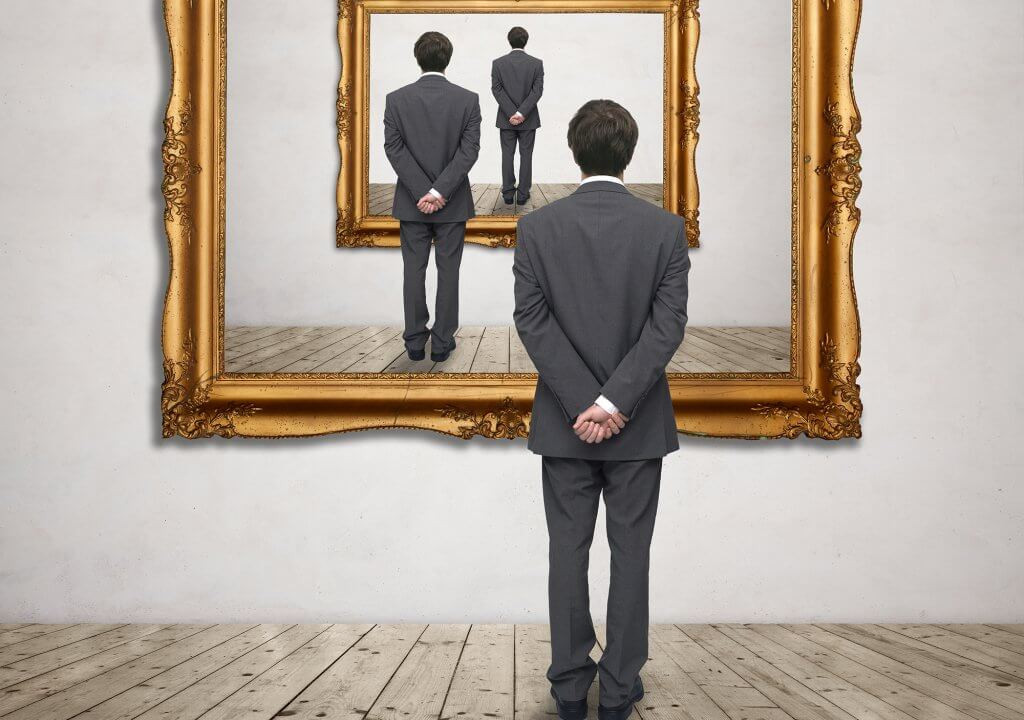 Choosing art objects for an interior often seems like a complex task, especially if you don't have special education or experience. How do you turn ordinary walls into an expressive canvas of your life? Here are some practical tips that will help you make the right choice and create a stylish interior with art:
Choosing art objects for an interior often seems like a complex task, especially if you don't have special education or experience. How do you turn ordinary walls into an expressive canvas of your life? Here are some practical tips that will help you make the right choice and create a stylish interior with art:
- Start by defining your style — look through magazines, websites, and social media, saving images of interiors and artworks that you like. Over time, you'll notice certain patterns in your preferences.
- Consider scale — for large walls, choose large works or compositions of several pieces. A small painting on a large empty wall will look lost.
- Pay attention to the color scheme — art objects can either harmonize with the interior, picking up its color scheme, or contrast with it, creating a bright accent.
- Consider art as a long-term investment — choose works that will please you for many years, not just correspond to current trends.
- Visit art object galleries for the home — this will help you expand your understanding of different styles and directions in art.
Art collecting expert Kate Watson-Smith in her guide to selecting and collecting art emphasizes the importance of a personal connection with the work: choose what truly touches you, not what might seem like a good investment or fashionable at the moment. This approach ensures that you won't get tired of your choice after a short time and will be able to enjoy the inspiring atmosphere of your home.
Combining Styles and Art Objects in Interiors
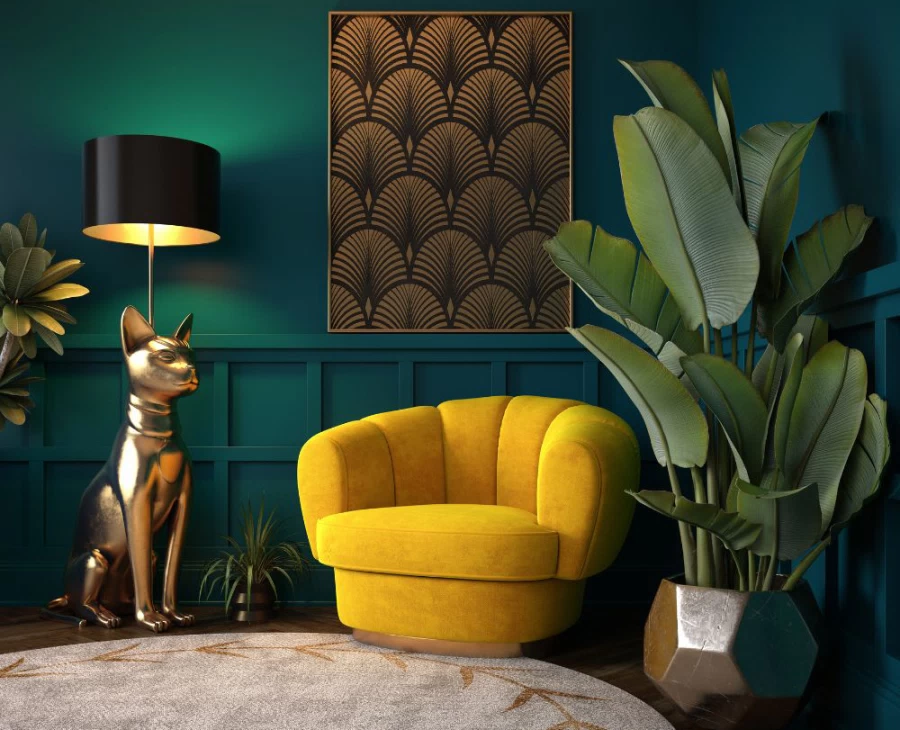 Art in home interiors should harmonize with the overall style of the room, but this doesn't mean you need to stick to strict frameworks. Contemporary art can look great in a classical interior, creating an interesting contrast, and vintage elements can add character to a minimalist space. Minimalism and art objects can create a striking effect thanks to the contrast between the laconic background and expressive works. Visual accents in the interior help create focal points that attract the eye and make the space more structured.
Art in home interiors should harmonize with the overall style of the room, but this doesn't mean you need to stick to strict frameworks. Contemporary art can look great in a classical interior, creating an interesting contrast, and vintage elements can add character to a minimalist space. Minimalism and art objects can create a striking effect thanks to the contrast between the laconic background and expressive works. Visual accents in the interior help create focal points that attract the eye and make the space more structured.
There are two main approaches to using art objects in interior design:
- The interior is built around the artwork — in this case, the painting, sculpture, or collection becomes the central element, and the rest of the design is selected in accordance with it.
- Artworks are selected for the finished interior — with this approach, art objects complement the existing design, supporting its style and color scheme.
Combining styles in an interior is the art of balance and harmony. Don't be afraid to mix different eras and directions if it reflects your individuality in design. The main rule is that all elements should support each other, creating a cohesive composition.
"Art in the home is not just decor, it's a story that you tell about yourself, your values, and your perception of the world. Don't be afraid to mix styles and eras if it reflects your individuality." — Miles Redd, American designer
Step-by-Step Plan for Integrating Art into Interiors
.png) If you want to methodically approach the process of decorating your home with art objects, follow this simple step-by-step plan:
If you want to methodically approach the process of decorating your home with art objects, follow this simple step-by-step plan:
- Audit the existing space — evaluate the color scheme, style, and free spaces for placing artworks.
- Determine a budget for interior decoration with art objects — decide in advance how much you're willing to spend on art objects. Remember that quality frames and lighting also require investment.
- Study the catalog of artworks — look through various sources to understand which styles and forms are closest to you.
- Create a placement plan — determine exactly where the artworks will be located. You can use paper templates the size of the proposed works to visualize them on the walls.
- Start with one key piece — choose one central work for each room and build the rest of the composition around it.
- Gradually add other elements — don't rush to fill all the space at once. It's better to add art objects gradually, evaluating how they fit into the overall picture.
- Experiment with arrangement — don't be afraid to swap paintings or move sculptures until you find the ideal arrangement.
- Provide proper lighting — invest in quality lighting for your artworks, this can dramatically change their perception.
Such a structured approach will help you avoid spontaneous purchases that may not fit into the interior, and create a truly harmonious space where each art decor for the apartment is in its place.
"Collect things that you like, and the house will tell your story. Artworks in the home should reflect the life of the inhabitants, their interests, travels, and experiences." — Nate Berkus, famous American interior designer
How to Determine the Authenticity of a Painting
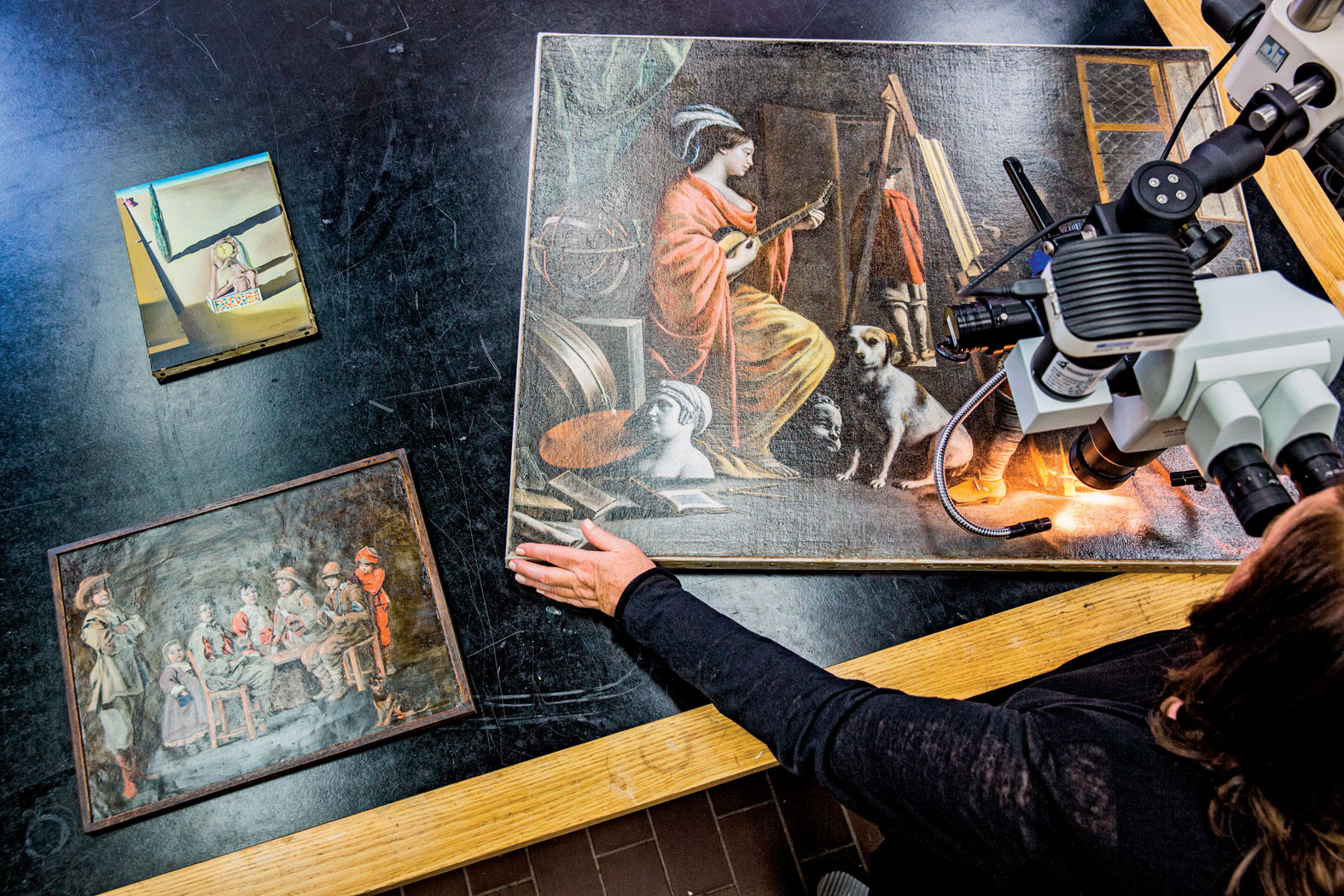 When buying artworks, especially if you consider them as an investment, it's important to know how to distinguish original works from forgeries. Although only expert examination can give one hundred percent certainty, there are signs worth paying attention to:
When buying artworks, especially if you consider them as an investment, it's important to know how to distinguish original works from forgeries. Although only expert examination can give one hundred percent certainty, there are signs worth paying attention to:
- Study the provenance — the history of the painting's ownership, supporting documents, certificates of authenticity.
- Pay attention to materials — artists from different eras used certain materials; inconsistency with the period may indicate a forgery.
- Research the author's signature — compare with known examples of the artist's signature.
- Evaluate the condition of the work — natural aging differs from artificially created patina.
- Check the execution technique — each known artist has their recognizable manner of painting.
If you seriously intend to invest in art, it's recommended to consult with an expert or contact a specialized organization for a professional examination. This will help avoid disappointments and financial losses in the future.
Success Story: How an Art Collection Transformed a Home
Spouses Alex and Emily from California never considered themselves art collectors until they inherited several paintings from Emily's grandmother. These works, created by local artists in the middle of the last century, had sentimental value but seemed incompatible with their modern minimalist interior. Instead of sending the paintings to storage, they decided to consult with a designer.
The result exceeded all expectations: the designer proposed building the home's color scheme around the muted tones of the paintings, adding several contemporary art objects that echoed them in mood. The wooden frames of the paintings were replaced with thin metal ones, which instantly modernized their appearance. Gradually, the couple began adding works by young artists to the collection, creating a unique eclectic style. The influence of art on the atmosphere of the home was so significant that today their dwelling regularly appears in design magazines as an example of the organic combination of family heritage and contemporary art in the interior.
How to Start Collecting Art Objects for Interiors
If you're just starting to get interested in art for your home, don't try to create a museum collection right away. Start with what you really like, what evokes an emotional response. Art decor for an apartment doesn't necessarily have to be expensive — today many galleries offer affordable works by emerging artists, which may increase in price later.
Here are several places where you can buy art objects for interiors:
- Art galleries — here you'll find works by professional artists with certificates of authenticity.
- Art fairs and festivals — a great opportunity to meet artists personally and acquire their works without a gallery markup.
- Online platforms for artists — resources such as Artsy, Saatchi Art, Etsy offer a wide selection of artworks in different styles and price categories.
- Auctions — both online and traditional, can be a source of unique works, sometimes at unexpectedly low prices.
- Student exhibitions — works by students from art schools are often sold at affordable prices and can be a good start to a collection.
It's important not to rush and carefully select each piece that you add to your home. It's better to have several truly quality and meaningful works for you than a multitude of random items.
"Quality is always more important than quantity when it comes to collecting art. It's better to have one work that evokes a deep emotional response than ten that just fill space." — Victoria Hagan, interior designer
Commercial Aspects of Acquiring Art for Interiors
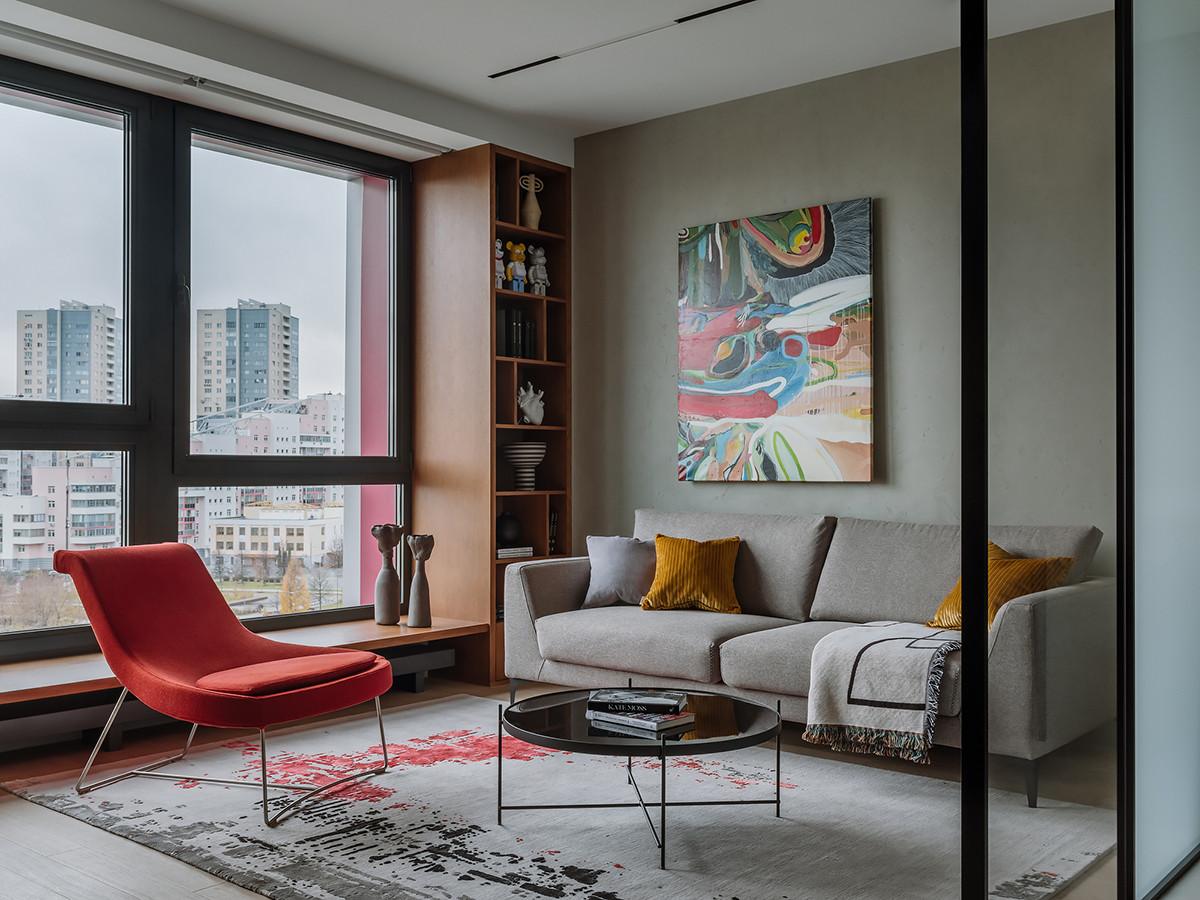 When deciding to buy art objects for an interior, it's important to consider not only aesthetic but also practical aspects. Today's market offers many opportunities for any budget and taste. You can commission a painting for your home from a young artist, purchase a ready-made work in a gallery, or even find interior art at a discount during special sales and art fairs.
When deciding to buy art objects for an interior, it's important to consider not only aesthetic but also practical aspects. Today's market offers many opportunities for any budget and taste. You can commission a painting for your home from a young artist, purchase a ready-made work in a gallery, or even find interior art at a discount during special sales and art fairs.
The cost of a sculpture for interior (price) can vary from several dozen to thousands of dollars, depending on the material, size, author's name, and uniqueness of the work. Many galleries and online platforms offer designer paintings to order, allowing you to get a work that perfectly matches your space and taste.
Pay attention to art object delivery services — professional transportation is especially important for fragile or expensive works. Many galleries include this service in the cost or offer it for an additional fee, guaranteeing the safety of the work during transportation.
When choosing art as an investment, it's recommended to consult with experts and study market trends. Works by well-known interior artists usually have a more stable investment value but can be significantly more expensive than works by emerging authors.
Budget Ways to Add Art to Interiors
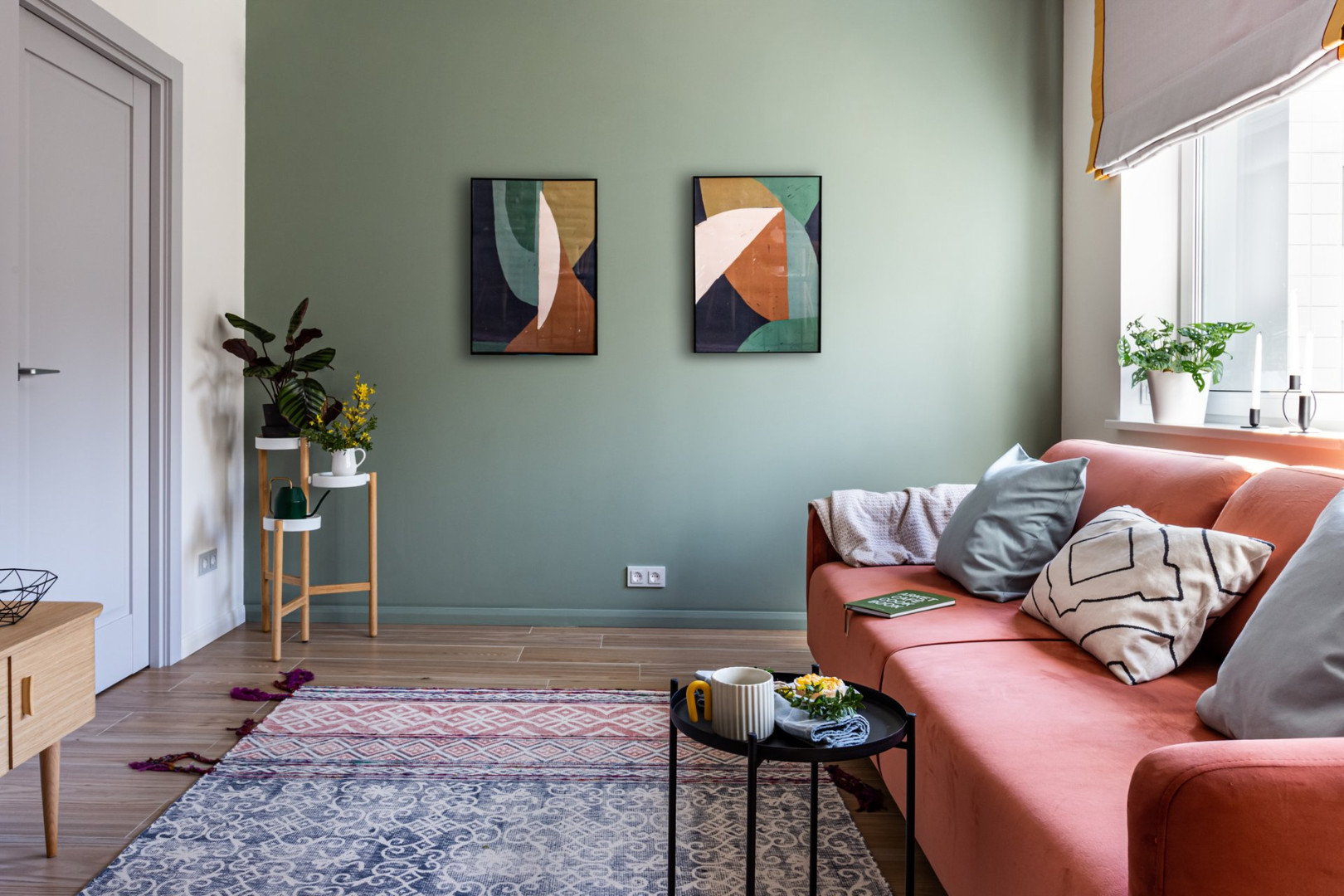 You can decorate your home with art objects even on a limited budget. Here are some ideas for stylish art decor that won't break your bank:
You can decorate your home with art objects even on a limited budget. Here are some ideas for stylish art decor that won't break your bank:
- Art prints — quality reproductions of famous works in beautiful frames can look decent and cost inexpensive (from $30 to $150).
- Student works — young artists from art educational institutions often sell their works at affordable prices (from $100 to $500).
- Vintage finds — flea markets and antique shops can be a source of unique items at a reasonable price (from $50 to $300).
- Handmade decor — ceramics, textiles, and other handmade items add character to the interior and often cost less than gallery art (from $25 to $200).
- Photographs — your own photographs, beautifully framed and grouped, can become a personal art gallery (cost of quality printing and frame from $15 to $100).
- Budget art objects — some galleries offer special collections of affordable works, especially during seasonal sales (from $50 to $300).
- Interior with handmade elements — self-created decorative elements can be no less expressive than purchased artworks.
For maximum effect from budget art objects, pay attention to their design and presentation. A properly selected frame, matting, and lighting can turn an inexpensive print into an expressive design element and create an inspiring atmosphere in your home.
Restoration of Old Artworks
 Often in our homes, we store old paintings, sculptures, or other art objects that have sentimental or historical value but require restoration. Professional restoration can not only return the work to its original appearance but also significantly increase its value.
Often in our homes, we store old paintings, sculptures, or other art objects that have sentimental or historical value but require restoration. Professional restoration can not only return the work to its original appearance but also significantly increase its value.
If you've found an old painting in the attic or received a collection that needs care, here are some tips:
- Don't try to clean or fix valuable works yourself — incorrect methods can cause irreparable damage
- Contact a professional restorer with a good reputation
- Keep all documents related to the work, they may contain important information for the restorer
- After restoration, ensure proper storage conditions to prevent repeated damage
Restored art objects can become a real gem in your interior, adding not only aesthetic appeal but also depth and historical value. The unique opportunity to preserve family heritage turns restoration into an investment that pays off both emotionally and materially.
"Restoration is not just repair, it's the revival of the work's history, a dialogue with the artist through time. A good restorer sees not only the damage but also the soul of the art object." — Julian Barrow, famous art restorer
Art Decor and Psychology: How Art Affects Our Perception of Space
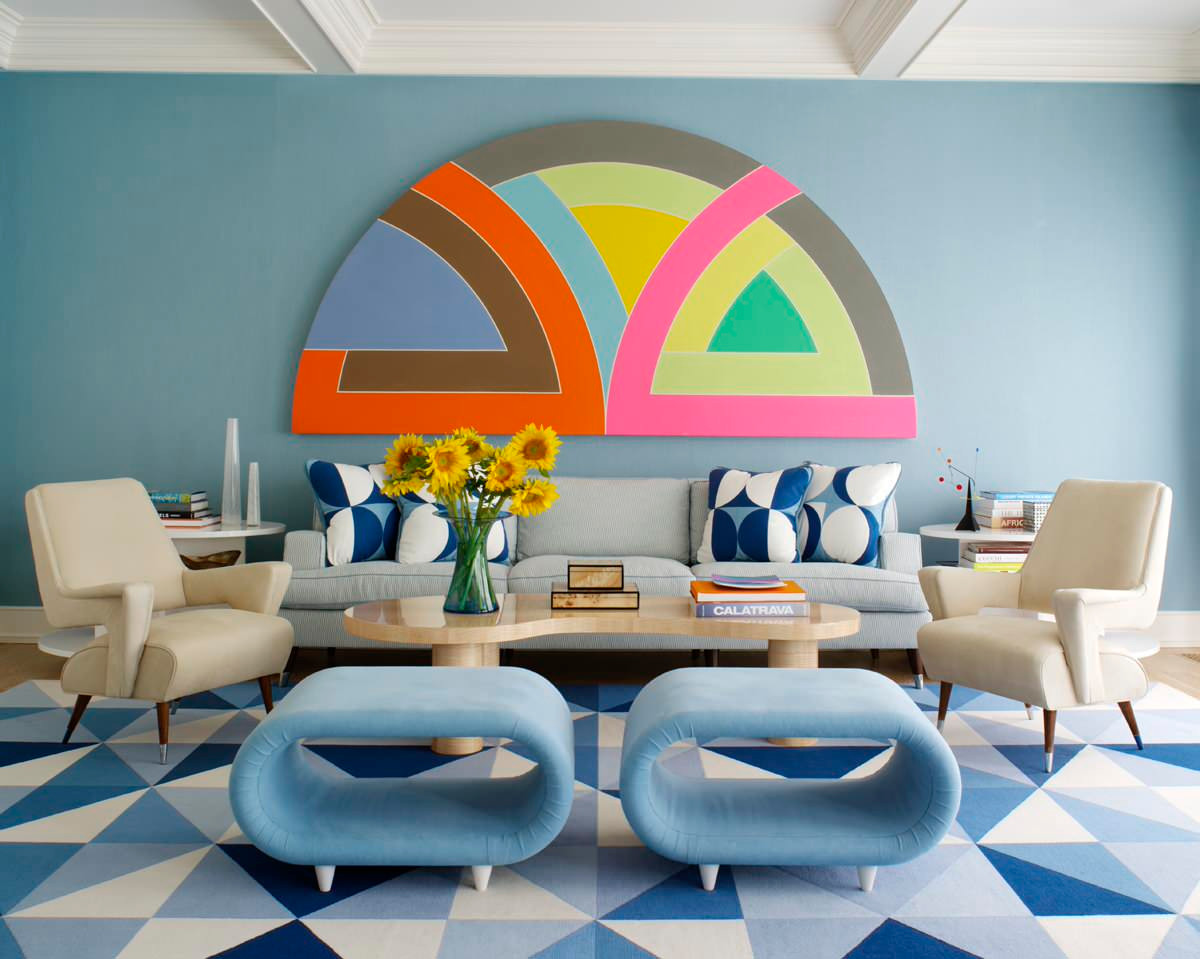 The influence of art on the atmosphere of a home goes far beyond simple aesthetics. Numerous studies confirm that art objects can affect our psychological state, mood, and even productivity. Art decor and psychology are closely interconnected: artworks can evoke certain emotions, stimulate creative thinking, or create a feeling of calm and tranquility.
The influence of art on the atmosphere of a home goes far beyond simple aesthetics. Numerous studies confirm that art objects can affect our psychological state, mood, and even productivity. Art decor and psychology are closely interconnected: artworks can evoke certain emotions, stimulate creative thinking, or create a feeling of calm and tranquility.
When choosing art for different rooms, consider the emotional effect they can provide:
- Bright, dynamic compositions increase energy, so they are appropriate in work areas and places of activity
- Calm landscapes and abstractions in muted tones promote relaxation — ideal for bedrooms and rest areas
- Works with a positive plot in the dining area can improve appetite and create a pleasant atmosphere at the table
- Family photographs and personal artifacts in common areas strengthen the connection between family members and create a sense of belonging
Interestingly, the emotionality of a space largely depends not only on the artworks themselves but also on their placement, lighting, and context in the interior. The same art object can be perceived completely differently in various settings.
"Art is not only what you see but also what you feel. A well-chosen piece can change not only the visual perception of space but also the emotional state of everyone in it." — Ilse Crawford, designer and editor
Conclusion
Art objects in interiors are not just decorative elements but a way of self-expression, creating individuality of space, and an emotional atmosphere in the home. They can become the center of composition or delicately complement the existing design, but in any case, they bring soul and character to the home. Don't be afraid to experiment with different types of art, combine styles and eras, creating a unique interior that will delight you and your guests for many years.
To design a home with art means to create a space that is not just functional but also has depth, individuality, and emotional richness. From selecting works to their placement and lighting — each stage of this process requires attention and a creative approach. But the result is a unique space with a magical transformation that reflects your personality and brings joy every day.
Remember that the most important goal of art in interiors is creating a space that reflects your individuality and brings you joy. Regardless of the cost or fame of the works, the main selection criterion is how they resonate with you and how they interact with other elements of your home.
